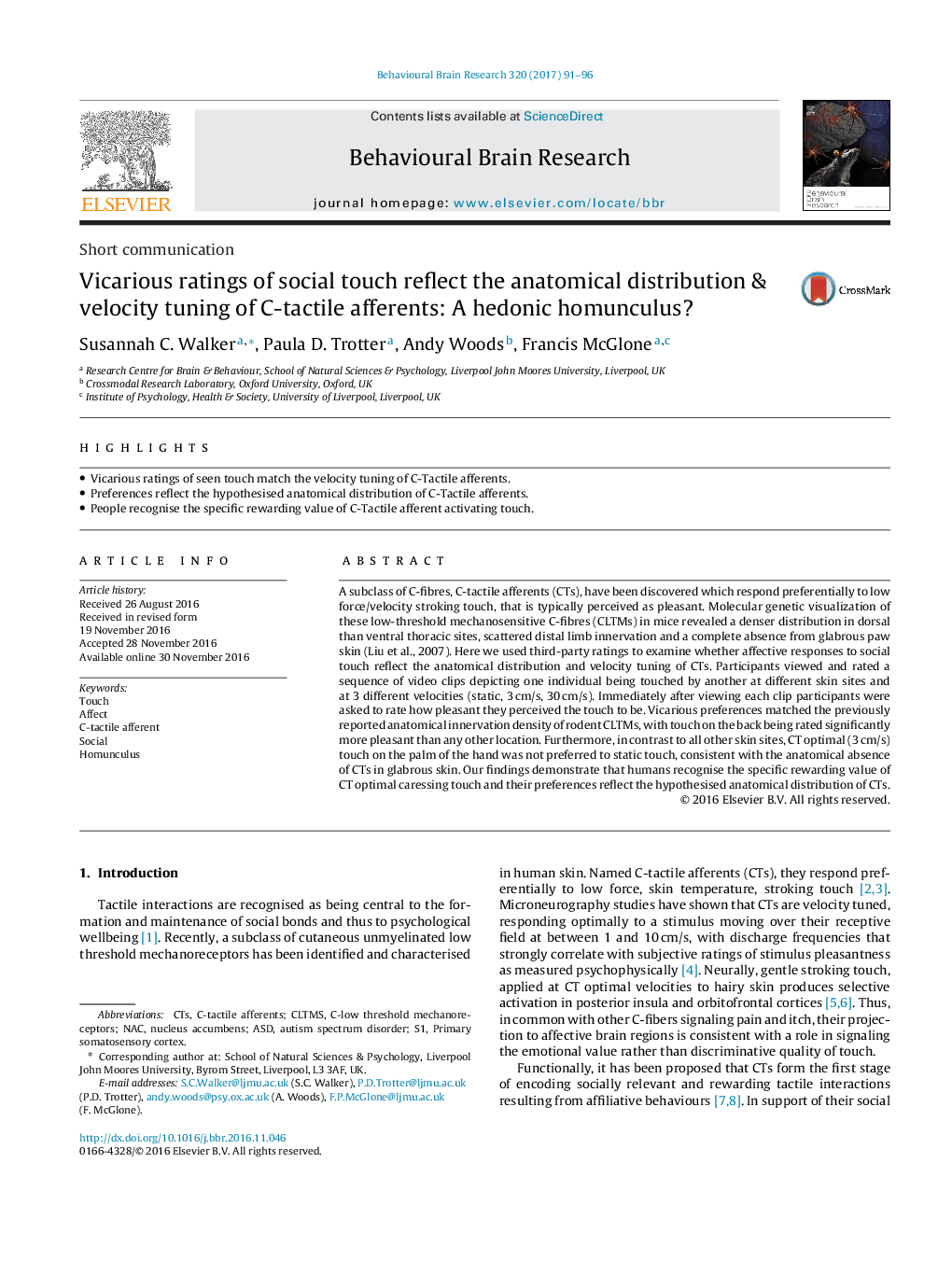| کد مقاله | کد نشریه | سال انتشار | مقاله انگلیسی | نسخه تمام متن |
|---|---|---|---|---|
| 5735677 | 1612913 | 2017 | 6 صفحه PDF | دانلود رایگان |
عنوان انگلیسی مقاله ISI
Vicarious ratings of social touch reflect the anatomical distribution & velocity tuning of C-tactile afferents: A hedonic homunculus?
دانلود مقاله + سفارش ترجمه
دانلود مقاله ISI انگلیسی
رایگان برای ایرانیان
کلمات کلیدی
موضوعات مرتبط
علوم زیستی و بیوفناوری
علم عصب شناسی
علوم اعصاب رفتاری
پیش نمایش صفحه اول مقاله

چکیده انگلیسی
A subclass of C-fibres, C-tactile afferents (CTs), have been discovered which respond preferentially to low force/velocity stroking touch, that is typically perceived as pleasant. Molecular genetic visualization of these low-threshold mechanosensitive C-fibres (CLTMs) in mice revealed a denser distribution in dorsal than ventral thoracic sites, scattered distal limb innervation and a complete absence from glabrous paw skin (Liu et al., 2007). Here we used third-party ratings to examine whether affective responses to social touch reflect the anatomical distribution and velocity tuning of CTs. Participants viewed and rated a sequence of video clips depicting one individual being touched by another at different skin sites and at 3 different velocities (static, 3Â cm/s, 30Â cm/s). Immediately after viewing each clip participants were asked to rate how pleasant they perceived the touch to be. Vicarious preferences matched the previously reported anatomical innervation density of rodent CLTMs, with touch on the back being rated significantly more pleasant than any other location. Furthermore, in contrast to all other skin sites, CT optimal (3Â cm/s) touch on the palm of the hand was not preferred to static touch, consistent with the anatomical absence of CTs in glabrous skin. Our findings demonstrate that humans recognise the specific rewarding value of CT optimal caressing touch and their preferences reflect the hypothesised anatomical distribution of CTs.
ناشر
Database: Elsevier - ScienceDirect (ساینس دایرکت)
Journal: Behavioural Brain Research - Volume 320, 1 March 2017, Pages 91-96
Journal: Behavioural Brain Research - Volume 320, 1 March 2017, Pages 91-96
نویسندگان
Susannah C. Walker, Paula D. Trotter, Andy Woods, Francis McGlone,